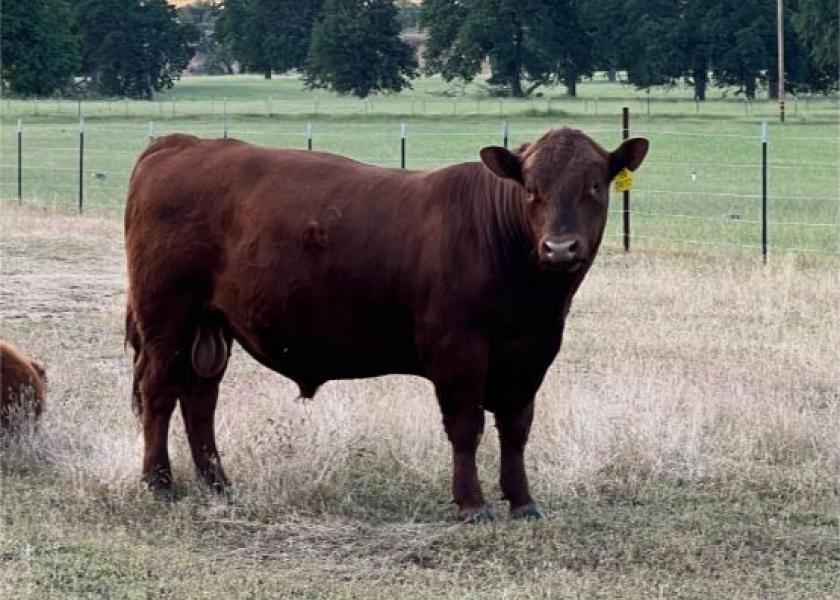Management of a New Yearling Bull Sets the Stage for Performance Success

Young beef bulls new to their jobs on the farm or ranch often need extra time and attention to get acclimated to their environment and roles. During a recent Beef Cattle Institute podcast, livestock experts at Kansas State University addressed how to best manage a young bull, thanks to a cattleman who submitted this question: “I just purchased a relatively expensive yearling bull and am preparing to turn him out with my herd. What are your tips to making sure we have a successful year with this bull?”
“I'm going to say really pay attention to him,” advised Robert (Bob) Larson, DVM and professor of production medicine at the university.
“This is not a proven bull, so make sure you consider all things about his health. Body condition score, feet and legs soundness – all the types of things that can cause a bull to have health problems and structural problems,” Larson said. “Monitor all of that pretty closely because he's young, and he's just getting to know his way around the operation.”
Turnout duration is an important management decision. Young bulls tend to run themselves a bit ragged, and producers need to take that into consideration in their management, according to Bob Weaber, Extension beef specialist at K-State.
“We can control that by not leaving him out with the cows for the entire breeding season,” Weaber said.
The benefits of not pushing a young bull to perform throughout a long breeding season are at least two-fold. The first is the producer is better able to maintain that animal’s well-being. Second, the producer can minimize the potential for having a bunch of open cows, because the yearling bull was new to his job.
Weaber said he would use the yearling bull for about half the breeding season and then bring in another bull to finish the season.
“I’d turn out multiple bulls, though maybe not at the same time so you can minimize the potential for social dominance problems,” Weaber said. “In a multi-bull pasture a concern that arises is injury due to the bulls fighting and aggression.”
Weaber said when the young bull is pulled out of the herd, it’s important for producers to have the ability to place him somewhere else on the farm or ranch, so he’s not over-worked or in competition with other working bulls.
Brad White, production medicine director for the Beef Cattle Institute and host of the podcast, said he would assume the yearling bull in question had had a breeding soundness examination prior to being purchased. He asked what Weaber and Larson would watch for during the breeding season, specifically related to the bull’s ability to breed.
Larson reiterated that regardless of age and experience, some of the main things to evaluate during the season are a bull’s feet and legs.
“Foot rot, injury, anything that affects mobility is going to affect his ability to follow the cows and breed them, and it can impact sperm production as well,” he said.
Larson recommended that producers schedule a specific time every two to three days to check out how well the bull is moving. “Pencil it on your calendar to get out and check how he’s walking. Make sure he’s healthy in that way,” he said.
Good body condition during the breeding season is important. “Body condition for a bull tends to change slowly and the only reason it would likely drop is if he's really in trouble, but it’s something to watch,” Larson noted.
Weaber said taking the ratio of bull-to-cow numbers into consideration can help maintain body condition for a young bull. As a rule of thumb for a young bull, Weaber recommends allowing the bull to service one cow per month of age at turnout.
“So, if he's 15 months old, for instance, when you turn him out he can cover 15 cows for a 45- to 90-day breeding season,” Weaber explained.
For cattlemen with a two-season calving strategy, the team encouraged allowing extra recovery time for a young bull between breeding seasons.
“Make sure he gets plenty of recuperation time. And because he’s still trying to grow, put some extra feed into him so he’s in good shape at turnout for fall covers,” Larson said.
The complete podcast discussion is available to watch here.
Producers and veterinarians can submit a question to the Beef Cattle Institute at bci@ksu.edu.







